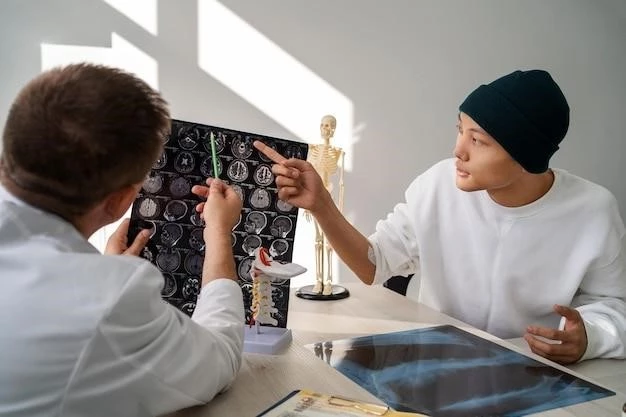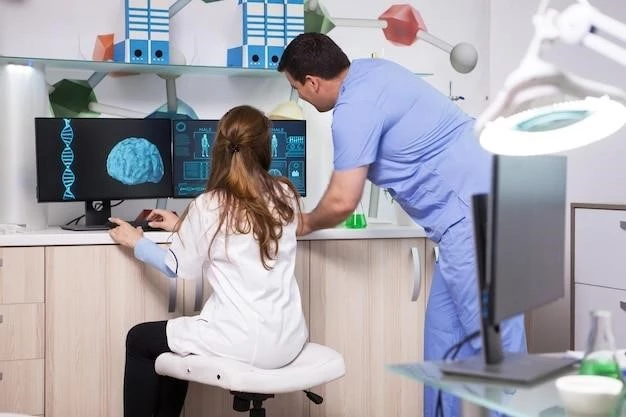Symptoms of Cerebro-costo-mandibular syndrome
Common symptoms of Cerebro-costo-mandibular syndrome may include breathing difficulties‚ rib abnormalities‚ and jaw malformations.
Common Symptoms
The common symptoms of Cerebro-costo-mandibular syndrome often include abnormalities affecting the ribs‚ leading to difficulties in breathing and thoracic cage development. Additionally‚ individuals with this syndrome may exhibit mandibular hypoplasia or underdevelopment of the jawbone‚ which can impact speech and eating functions. Craniofacial anomalies such as cleft palate or micrognathia are also commonly observed in individuals with this condition. Furthermore‚ patients may experience feeding difficulties‚ respiratory challenges‚ and growth delays. It is essential for healthcare professionals to be attentive to these symptoms for timely diagnosis and appropriate management of Cerebro-costo-mandibular syndrome.
Causes of Cerebro-costo-mandibular syndrome
Cerebro-costo-mandibular syndrome is primarily caused by genetic factors and mutations in the RSPRY1 gene.
Genetic Factors
The Cerebro-costo-mandibular syndrome is primarily linked to genetic mutations‚ specifically in the RSPRY1 gene. These mutations disrupt normal embryonic development‚ leading to the characteristic symptoms of the condition. The syndrome follows an autosomal dominant pattern of inheritance‚ meaning an affected individual has a 50% chance of passing the mutated gene onto their offspring. Understanding the genetic factors contributing to this syndrome is crucial for effective diagnosis‚ genetic counseling‚ and potential future therapeutic interventions that target the underlying genetic abnormalities.
Treatment options for Cerebro-costo-mandibular syndrome
Treatment involves a multidisciplinary approach addressing the respiratory‚ orthopedic‚ and craniofacial aspects of the syndrome.
Medical Interventions
Medical interventions for Cerebro-costo-mandibular syndrome focus on managing respiratory issues through interventions like tracheostomy or continuous positive airway pressure (CPAP) for breathing support. Orthopedic treatments may include rib stabilization procedures or spinal correction surgeries. Additionally‚ craniofacial surgeries can address jaw and palate abnormalities to improve speech and feeding functions. It is crucial for healthcare professionals to collaborate closely to tailor treatment plans to each individual’s specific needs and ensure comprehensive care for those with Cerebro-costo-mandibular syndrome.

Diagnosis of Cerebro-costo-mandibular syndrome
Diagnosis involves clinical evaluation‚ genetic testing‚ imaging studies‚ and consultation with specialists for accurate identification.
Diagnostic Procedures
Diagnostic procedures for Cerebro-costo-mandibular syndrome often involve genetic testing to identify mutations in the RSPRY1 gene. Imaging studies such as X-rays‚ CT scans‚ and MRIs may be used to evaluate skeletal abnormalities in the ribs and jaw. Clinical assessments by specialists like geneticists‚ orthopedic surgeons‚ and craniofacial experts help in confirming the diagnosis. Furthermore‚ prenatal screening and ultrasound can aid in early detection of the syndrome in utero. Timely and accurate diagnosis is essential for initiating appropriate management strategies and providing targeted care for individuals with Cerebro-costo-mandibular syndrome.
Management of Cerebro-costo-mandibular syndrome
The management involves a multidisciplinary approach focusing on respiratory‚ orthopedic‚ and craniofacial challenges.
Lifestyle Modifications
Lifestyle modifications for individuals with Cerebro-costo-mandibular syndrome may include dietary adjustments to ensure optimal nutrition despite feeding difficulties. Speech and feeding therapy can aid in improving communication and eating skills. Physical therapy may be beneficial to enhance mobility and muscle strength. Moreover‚ maintaining a supportive environment that caters to the specific needs of the individual is vital for their overall well-being. Collaborating with healthcare providers to customize lifestyle strategies is essential for enhancing the quality of life for individuals with Cerebro-costo-mandibular syndrome.
Prognosis of Cerebro-costo-mandibular syndrome
The prognosis varies depending on the severity of symptoms and the individual’s response to multidisciplinary interventions.
Long-Term Outlook
The long-term outlook for individuals with Cerebro-costo-mandibular syndrome is influenced by the management of respiratory complications‚ orthopedic issues‚ and craniofacial abnormalities. Regular monitoring by a team of healthcare specialists is essential to address evolving needs and ensure optimal care. With timely interventions‚ including surgeries and therapies‚ the prognosis can be improved‚ enhancing the individual’s quality of life. Ongoing research and advancements in medical care offer hope for better long-term outcomes for those affected by Cerebro-costo-mandibular syndrome. Support from healthcare providers‚ caregivers‚ and support groups plays a crucial role in enhancing the long-term outlook for individuals with this rare condition.
Research on Cerebro-costo-mandibular syndrome
Ongoing research aims to further understand the genetic mechanisms‚ improve diagnostic tools‚ and explore potential therapeutic strategies.
Current Studies
Current studies on Cerebro-costo-mandibular syndrome focus on investigating the genetic basis of the condition‚ developing targeted therapies to address specific symptoms‚ and improving long-term outcomes. Researchers are exploring innovative approaches such as gene editing techniques‚ advanced imaging modalities‚ and personalized treatment strategies. Clinical trials are underway to assess the efficacy of new interventions and establish guidelines for comprehensive care. By expanding knowledge through rigorous research‚ the scientific community aims to enhance diagnostic accuracy‚ refine treatment protocols‚ and ultimately improve the quality of life for individuals affected by Cerebro-costo-mandibular syndrome.
Support groups for Cerebro-costo-mandibular syndrome
There are dedicated support groups providing resources‚ information‚ and emotional support to individuals and families affected by this syndrome.
Community Resources
Community resources for Cerebro-costo-mandibular syndrome offer educational materials‚ referrals to specialists‚ financial assistance programs‚ and platforms for connecting with other affected individuals. These resources empower patients and families to access quality care‚ navigate healthcare systems‚ and obtain emotional support; Additionally‚ community organizations host awareness events‚ fundraising campaigns‚ and advocacy efforts to raise visibility for the syndrome and promote research advancements. By engaging with these community resources‚ individuals impacted by Cerebro-costo-mandibular syndrome can enhance their knowledge‚ receive practical help‚ and foster a sense of belonging within a supportive network.
